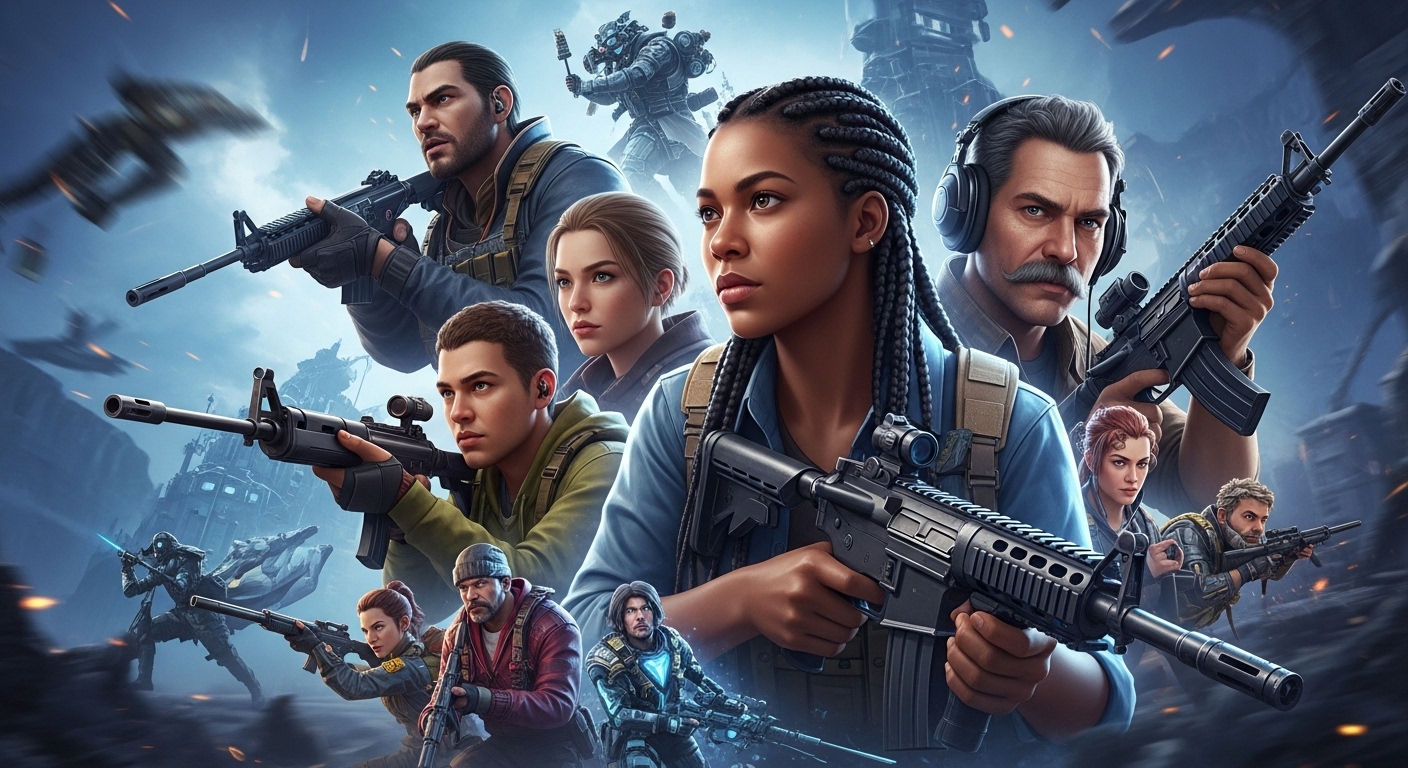First-Person Shooters, or FPS, these games have carved out a massive niche in the gaming world. Whether it’s the high-action adrenaline rush or the intricate strategies involved, gamers find themselves irresistibly drawn to them. I mean, who doesn’t like a good adrenaline rush every now and then? But there’s so much more to FPS games than just shooting and running. The whole ecosystem, from graphics to storyline, plays a crucial role. This brings us to the deeper layers of FPS, and what exactly makes them tick.
The Evolution of FPS Games
Let’s take a trip down memory lane. The humble beginnings of FPS games were something, weren’t they? Back in the day, the graphics were pretty basic. I’m talking about games like “Wolfenstein 3D” and “Doom”. They paved the way for the modern FPS games we see today. Fast forward to today, and we have games with mind-blowing graphics and hyper-realistic environments. The pace at which technology has advanced is nothing short of remarkable. And with advances in physics engines and AI, the gameplay feels almost lifelike. If you want to delve more into the history of FPS games, here’s a good starting point.
Graphics and Gameplay: A Match Made in Heaven
Graphics are undoubtedly a key factor, but what about the gameplay mechanics? The modern FPS games offer an immersive experience with their complex gameplay mechanics. Remember how “Call of Duty” changed the landscape? It introduced a level of realism and intricacy that was unparalleled at the time. The balance of graphics and gameplay is what keeps players coming back.
Table: Evolution of Popular FPS Games
| Year | Game | Impact |
|---|---|---|
| 1992 | Wolfenstein 3D | First popular FPS |
| 1993 | Doom | Revolutionized the genre |
| 2003 | Call of Duty | Set new standards |
| 2007 | Call of Duty 4: Modern Warfare | Increased realism and story depth |
Community and Competitive Scene
Oh, the community! It’s one of the most vibrant aspects of FPS games. From casual gamers to esports professionals, the community is a melting pot of talent and passion. Tournaments and competitions are held globally, with prize pools reaching millions. The competitive scene is not just about winning; it’s also about the camaraderie, the learning, and the thrilling experience. And let’s not forget the streamers and content creators who keep the buzz alive.
For those interested, you can explore more about the dynamics of gaming communities here. It’s fascinating how these communities evolve and contribute to the growth of the gaming industry.
Content Creation and Streaming
The rise of content creation platforms like Twitch and YouTube has opened new doors. Gamers now share their skills and experiences with a global audience. This has not only fostered a sense of community but has also provided career opportunities for many. Streaming is not just about playing games; it’s about engaging with the audience, sharing tips, and building a brand.
Technological Advancements and Innovations
The continuous evolution of technology has a massive impact on FPS games. Virtual Reality (VR) and Augmented Reality (AR) are slowly making their way into the genre, offering an even more immersive experience. Can you imagine playing your favorite FPS game in VR? It’s already happening, and it’s only going to get better.
AI and Machine Learning in FPS
Another exciting development is the integration of AI and machine learning. These technologies are being used to create smarter NPCs and more dynamic gaming environments. The AI opponents are no longer predictable, making the games even more challenging and engaging.
Challenges and Criticisms
Like everything else, FPS games aren’t without their criticisms. Concerns about violence and its impact on young minds are constantly debated. Many argue that it promotes aggression and desensitizes players to violence. But there are studies suggesting otherwise, pointing out the benefits like improved hand-eye coordination and strategic thinking.
Balancing the Pros and Cons
It’s a tricky balance. While concerns are valid, it’s also important to recognize the positive aspects. The social connections, the strategic planning, the teamwork, all play into the cognitive benefits that can be gained from FPS games.
For those interested in delving deeper into this topic, you might consider checking out discussions and insights on FPS games. It offers a balanced look at both the advantages and potential drawbacks.
Frequently Asked Questions (FAQs)
- Q: Are FPS games too violent for kids?
A: It really depends on the game and the maturity of the child. Some games are definitely not suitable for younger audiences, but others can be a fun and educational experience. - Q: Do FPS games improve reflexes?
A: Many players and researchers believe they do. The fast-paced nature of these games can help enhance hand-eye coordination and quick decision-making. - Q: Are there any good FPS games for beginners?
A: Absolutely! Games like “Portal” offer a good introduction without being too overwhelming. They focus more on problem-solving and less on shooting. - Q: How crucial is it to have high-end equipment for FPS gaming?
A: While having good equipment can enhance the experience, it’s not essential. Many games can be enjoyed on standard setups. It’s more about the play style and strategy. - Q: Can playing FPS games lead to a career?
A: Definitely! With the rise of esports and streaming, many gamers have turned their passion into a full-time career. It does take dedication and skill, though.
So, there you have it. A dive into the world of FPS games. It’s a fascinating genre with a lot more depth than just running and gunning. Whether you’re a casual gamer or a hardcore enthusiast, there’s always something new to discover and experience. Just grab a controller, dive in, and enjoy the ride.


